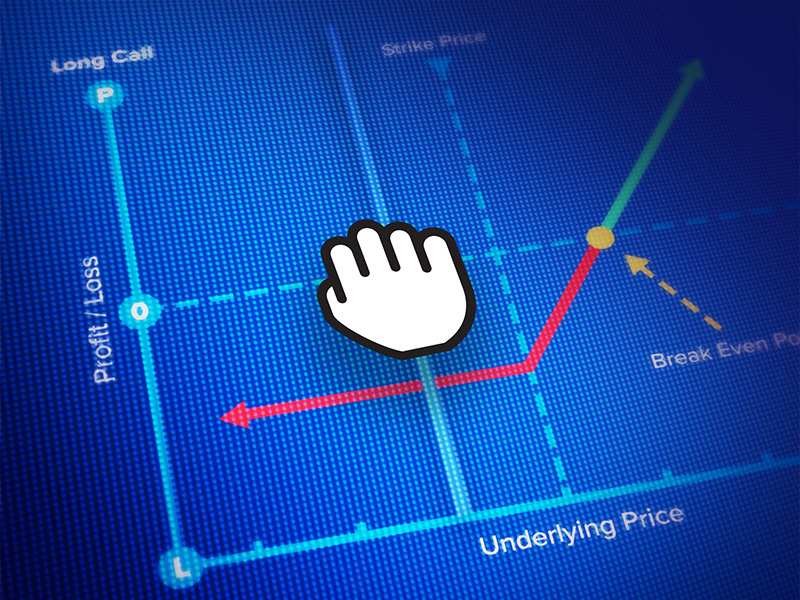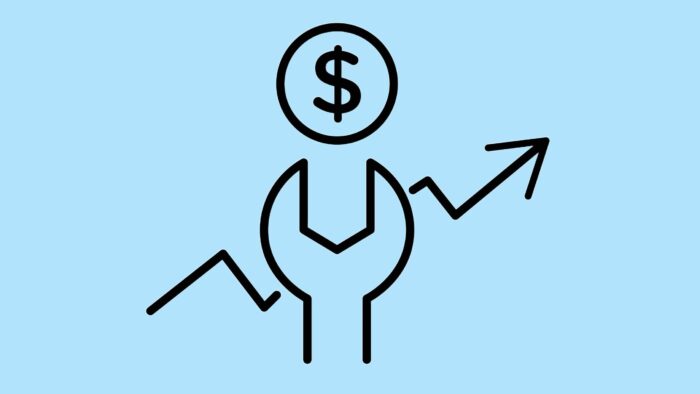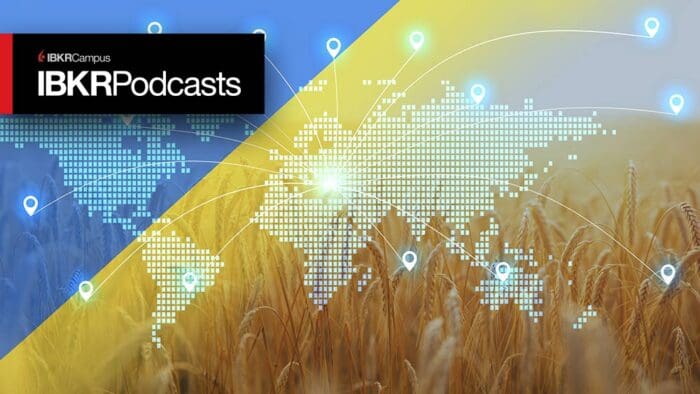Ahead of the USDA June Acreage Report, I sat down with AgResource President Dan Basse over in Chicago. In my hunt for the elephant in the room surrounding this year’s grains crop, Dan shone the light on several impediments ranging from $34 per gallon diesel prices in Ukraine, to ultra-strong Chinese demand for Brazilian exports. It’s the sort of concoction that has the potential to make the June 30 release quite explosive.
Note: Any performance figures mentioned in this podcast are as of the date of recording (June 21, 2023).
Summary – IBKR Podcasts Ep. 86
The following is a summary of a live audio recording and may contain errors in spelling or grammar. Although IBKR has edited for clarity no material changes have been made.
Andrew Wilkinson
Welcome to today’s podcast episode. My name is Andrew Wilkinson, director of trading education here at Interactive Brokers, and I’m delighted to have with me a completely new guest to cover the forthcoming June crop report. My guest is Dan Basse from AgResource.com over in Chicago. How are you, Dan?
Dan Basse
I’m very well, Andrew, good to be with you.
Andrew Wilkinson
And welcome to the show. We’re going to talk about commodities and particularly crops, and the June 30th crop report, which comes out imminently. It’s something I followed years ago, but I lost touch with as I had stopped being so involved in the futures market. So, give us a bit of background. Tell us a little bit about what the June acreage report is. Is this something that comes out every year? Just remind the listeners new to the futures market, what the annual June acreage report covers?
Dan Basse
Andrew, it’s one of the most important reports of the year and the most important report of summer. What USDA does are, through its statistical agency called NASS, the National Agricultural Statistical Service, it outlines where US farmers have planted row crops and so, you know it’s very important. We have an intentions report in March giving us what the farmers intend to plant and then we shore up as we look in the final report as we get to the end of June. Now, this is as of June 1st, so the surveys were conducted in late May, early June by the USDA and then we could come forward. We also have kind of another report that comes through that I don’t want to, how should I say, diminish? But it is called a stocks report, so it would give us the stocks of corn, soybeans and wheat and other grains in the United States as of June 1st.
Andrew Wilkinson
So in particular for the June 30th report what are you watching in that release and what could surprise the market?
Dan Basse
Well as we look at the report, it’s a really super charged, an important report coming up because we’ve been so dry across the central US over the last eight weeks. And so, the need for acres is bigger than it normally would be. And so, as we think about this report, the United States has now reached something we call peak farmland. In other words, outside of a program called Conservation Reserve Program, which is set aside for wildlife and environmental purposes, the US has about 270 million acres of crops, excluding forages like hay, that we can plant the rogue crops. And so, what farmers do with that will be very important. The USDA back at the end of March, indicated that US farmers would plant 92 million acres of corn, 87 million acres of soybeans and 49.9 million acres of wheat. So, you know, if I had a few other crops on top of that. We get to the 270 million total. What we believe this report will show is that maybe farmers didn’t match all of their intentions. So, we’re fearful that farmers will plant maybe about 800,000 acres less of corn, 91.286 and a half million acres less of soybeans and a little less because spring wheat has been so dry across Dakota, 49.6. The reason we say this is farmers have optionality to go into a program called Prevent Plan, where the government pays them if they can’t get their crops in on time. And so, for some farmers in North Dakota, on corn, this was over $330.00 an acre, which was an incentive for them not to plant corn.
Andrew Wilkinson
So far in 2023 the volatility in corn prices has been pretty sizable I think, I just had a look at the September corn chart. I think today corn prices have already taken off, but we’ve pretty much covered the entire year’s range in the last several weeks for corn and I think for soybean too. There’s still some uncertainty in the Black Sea grain deal and if that continues, that could also complicate the 2023/24 crop year, right? But what are some of the factors that could upset the apple cart this year?
Dan Basse
Volatility has been extreme over the last six weeks in the grain markets. I’m sure the US Central Bank would like grain prices to lay down so that inflation would be calmer. As you think about the food pillar, the corn, soybean and wheat markets are the bottom of that pillar and we kind of build up from there because it flows to livestock, it flows to everything that is food in your grocery store. So, whether it’s corn chips or a tenderloin, it all kind of comes together. So, as you think about this we are now experiencing some very dry weather, unusually so. But more importantly, you know our friends in the Black Sea, President Putin is no longer looking like he’s willing to go along and allow the export corridor to stay open for Ukraine last year or for the year to date. By that I’m saying when we started this agreement back on July 15th of last year, at the end of May, we’ve shipped out 39 million metric tons of grain out of Ukraine. This is a sizable amount. This has helped feed sub-Saharan Africa and much of Southeast Asia. So, if this grain deal doesn’t come forward and it’s not looking probable, we would imagine Ukraine will have to find other places to export, principally through Europe, or maybe down the Danube River. Now, that is all possible, but you know, Ukraine is already looking at a smaller grain crop because farmers are in a war and losing so much money. The price of diesel in today in Ukraine is $34 a gallon. It’s hard to make money as a farmer planting corn, soybeans or sunflowers. So, but Ukrainian farmers have pulled back, so they have smaller crops to export this year, which places more importance back on Russian grain production because they’ll keep exporting. And then, of course, the United States, Canada and Europe, which are the principal exporters that we see today.
Andrew Wilkinson
What podcast about crop conditions would be complete without discussing the weather right? Conditions have been very dry across the corn belt and according to NOAA, the US National Oceanic and Atmospheric Administration, more widespread drought development is anticipated for that central corn belt, the Great Lakes region and into Western New York. What are you seeing with corn conditions and what does that mean for crop yields?
Dan Basse
So, for your listeners, every week we get an estimate from enumerators, as we call them, or people that will look right around the Midwest to engage crop conditions. It’s a beauty contest. You know, what is the corn doing? Is it growing? Is it rolling in afternoon heat? Is it looking green? You know, if you and I were driving down the road, we could probably look at a corn field and say it looks pretty good or not good. We categorized this into excellent, good, fair, very poor and poor ratings, and this comes out once a week, and it does model out. There’s 3400 respondents that do this across the central US if you could imagine kind of a corn beauty tour or soybean beauty tour. So, as you think about this, they give those conditions and we then model it out to what it means for yields. Now, conditions have been falling sharply. In the key state of Illinois, which is the largest producer of corn and soybeans this year, soil moisture is looking at 85% short or very short all the way down to the sub soil level and so the need for rain is immediate and crops are suffering accordingly. Now we have not been this dry for 11 years. The last time I can find we were this dry was back in 2012. Back then, of course, yields fell about 23% for the July WASDE report. So, we’ll see how this all kind of plays out today. But an expanding drought Illinois, Iowa, Indiana, the key high states across the Midwest, if it goes north or South or we get any heat in here, it’s going to be very adverse to yield. And then the market has to rally to of course accommodate a smaller crop and somehow less demand here in the United States.
Andrew Wilkinson
This June 30th annual report from the USDA has the potential, put it that way, to be a huge driver of prices right then?
Dan Basse
Oh, it does! Normally, we can look backwards in history, and we can find out that we have price moves of 5% up or down depending upon what USDA says. Many times we can have limit moves which would put us closer to 10%, so this is a market that’s going to have a lot of volatility. And I would tell you, Andrew, I think this year’s report is going to have all of that relative to the weather conditions we just talked about.
Andrew Wilkinson
What tools do farmers or speculators, hedgers, producers, what do they have to manage the risk?
Dan Basse
We of course have spreads – you can always put on a spread position. Maybe you’re bullish of corn and you want to be bearish of wheat or something like that. So, there’s always these inter-crop spreads. Then we have short-dated options, new crop options, or even the existing old crop options which will expire within a week or 10-days’ time frame. And these provide an ability for one to at least get some protection and manage risk around these almost impossible reports to forecast. So, we tell people and farmers, and such, that this is the best way to manage your risk. Options to me are looking favorable. So again, because of the weather problems that we’ve had, the volatility, or the cost of these options are extremely high as we look at them today.
Andrew Wilkinson
And finally, we’ve spoken about the US crop out. There’s a whole world of producers out there, particularly South America, where crops are huge, but you’ve also got the Chinese side of the equation where there is strong demand. What do you watch for from both the South American crop perspective and the ability of China to import lots of tonnage?
Dan Basse
Yes. So, the Chinese have been very active in buying the record large Brazilian soybean crop that is 156 million metric tons. Strangely enough, in the last nine months, Brazil has captured not only the world’s largest soybean exporter crown, but also the world’s largest corn exporter crown. So, they had very good weather and were blessed with a very big crop. To the South of them, Argentina fared very poorly; their crops were cut in half by a very dire drought. As we look at China, China is taking advantages of some of these cheap prices offered by Brazil. And they have been importing record tonnages of soybeans from Brazil, going all the way back to March. So, we would expect that China will take anywhere from 101-102 million metric tons of soybeans in the 22/23 crop year, so very strong active demand by China. The Chinese, of course, will always use weak prices to fill their government coffers. By that, I’m saying, reserve rebuilding, but even the Chinese this year are having their own weather problems, with too much rain across their wheat areas, and too dry across your corn and soy areas. So globally speaking, we’ve got a lot of hot spots for world weather this year, including China. The spring wheat area, Europe, the United States and so there’s a lot to watch. Mother Nature has not been kind to global grain production, at least as we look forward to the end of June.
Andrew Wilkinson
Dan Basse, president of AgResource.com over in Chicago, thank you very much for joining us today. We hope to speak to you soon.
Dan Basse
Thank you, Andrew. It’s been a pleasure. I hope everybody has good luck with the report in the markets.
Andrew Wilkinson
And thanks to all our listeners for tuning in, and don’t forget to look out for more at ibkrpodcasts.com and wherever you download your podcast don’t forget, please leave us a review. Thanks everyone. Bye for now.
Disclosure: Interactive Brokers
The analysis in this material is provided for information only and is not and should not be construed as an offer to sell or the solicitation of an offer to buy any security. To the extent that this material discusses general market activity, industry or sector trends or other broad-based economic or political conditions, it should not be construed as research or investment advice. To the extent that it includes references to specific securities, commodities, currencies, or other instruments, those references do not constitute a recommendation by IBKR to buy, sell or hold such investments. This material does not and is not intended to take into account the particular financial conditions, investment objectives or requirements of individual customers. Before acting on this material, you should consider whether it is suitable for your particular circumstances and, as necessary, seek professional advice.
The views and opinions expressed herein are those of the author and do not necessarily reflect the views of Interactive Brokers, its affiliates, or its employees.
Disclosure: Options Trading
Options involve risk and are not suitable for all investors. For information on the uses and risks of options, you can obtain a copy of the Options Clearing Corporation risk disclosure document titled Characteristics and Risks of Standardized Options by going to the following link ibkr.com/occ. Multiple leg strategies, including spreads, will incur multiple transaction costs.
Disclosure: Futures Trading
Futures are not suitable for all investors. The amount you may lose may be greater than your initial investment. Before trading futures, please read the CFTC Risk Disclosure. A copy and additional information are available at ibkr.com.














Join The Conversation
For specific platform feedback and suggestions, please submit it directly to our team using these instructions.
If you have an account-specific question or concern, please reach out to Client Services.
We encourage you to look through our FAQs before posting. Your question may already be covered!